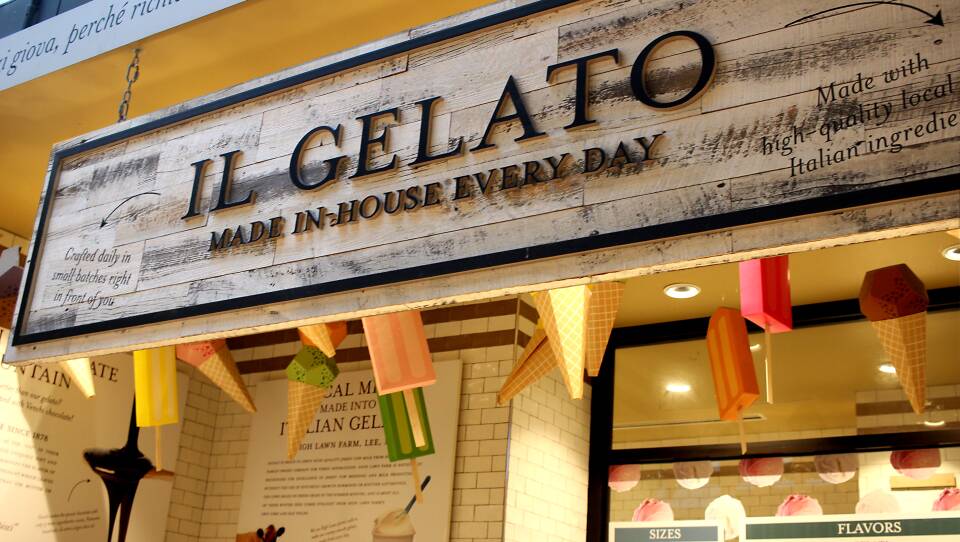Gelato is a dessert with Italian roots that are over 400 years old. It made its way to the U.S. in the 18th century but took a back seat to ice cream until the late 1900s. Nowadays, you can find gelato just about everywhere, including at Il Gelato. The take-away counter located in the middle of Eataly Boston is serving an impressive and flavorful assortment of the Italian frozen treat, all made in-house daily.
Pastry Chef Ian Catalina says that the daily production of small batches is just one of many steps required to make their premium gelato. The first is sourcing high-quality ingredients. They use hazelnuts from Piemonte, pistachios from Sicily, and Catalina says they source their milk from High Lawn Farm in Lee, Massachusetts. “400 head Jersey cows there, and I hear they're the most pleasantly dispositioned.” He jokes that he's never met an Italian cow, but is willing to bet they're pretty happy as well.
I have no doubts about the quality of the product at Eataly Boston, and I'm more than impressed with their selection. But, when it comes to making, serving, and eating gelato, I can't help but wonder what makes it different from ice cream? Catalina assures me that they are indeed quite different, and it starts with the recipe.
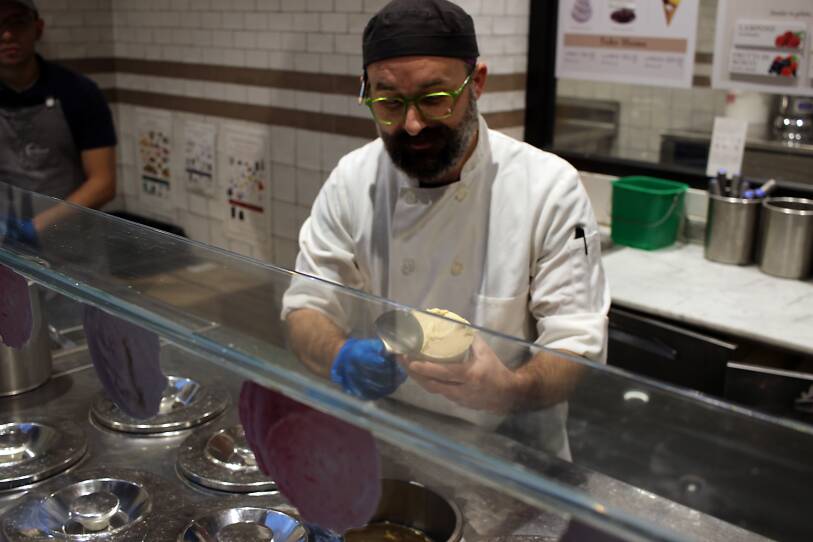
Same ingredients, different order.
The first ingredient in ice cream is heavy cream, followed by milk, sugar, and everything else. “With gelato, milk is the first ingredient,” Catalina says. “Followed by heavy cream, sugar, and adjunct flavors like chocolate chips.” But less cream does not mean less flavor. Without all of that added fat, gelato actually has a higher ratio of flavorings to liquid, giving it a richer taste.
The next step is pasteurization. At Il Gelato, they take the milk, heavy cream, and sugar, and add neutro, a plant-based stabilizer that Catalina says gives their gelato even more body. That mixture is brought up to a temperature of about 150 degrees for no less than 30 minutes before it sits overnight, another essential step. “You want to allow the fat globules to form long-chain molecules,” he says. “The process gives gelato a creamier mouthfeel.”
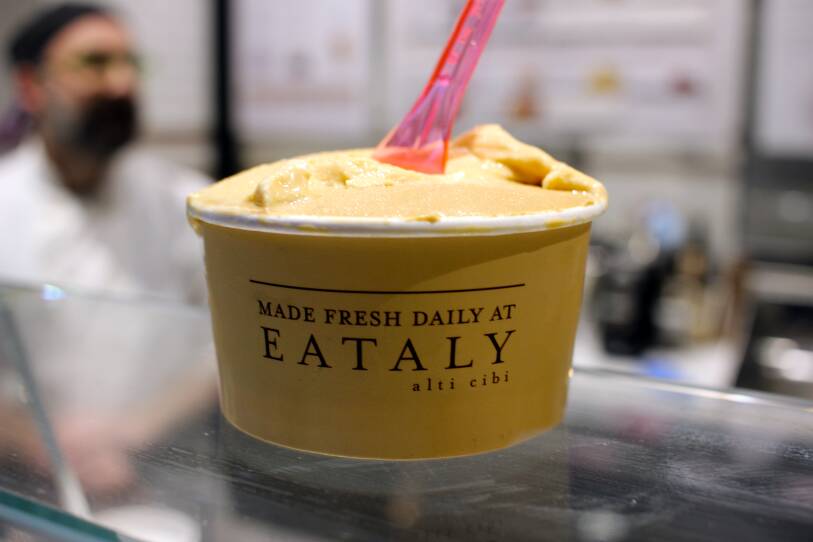
And then there's something called overrun.
Overrun is the percentage of air that's incorporated into the base during the churning process. Catalina explains that ice cream gets churned at a faster rate than gelato, giving it a fluffier texture. And while overrun percentages for ice cream are often as high as 100% (one part ice cream to one part air), gelato's are much lower, around 30%, giving it a smoother texture.
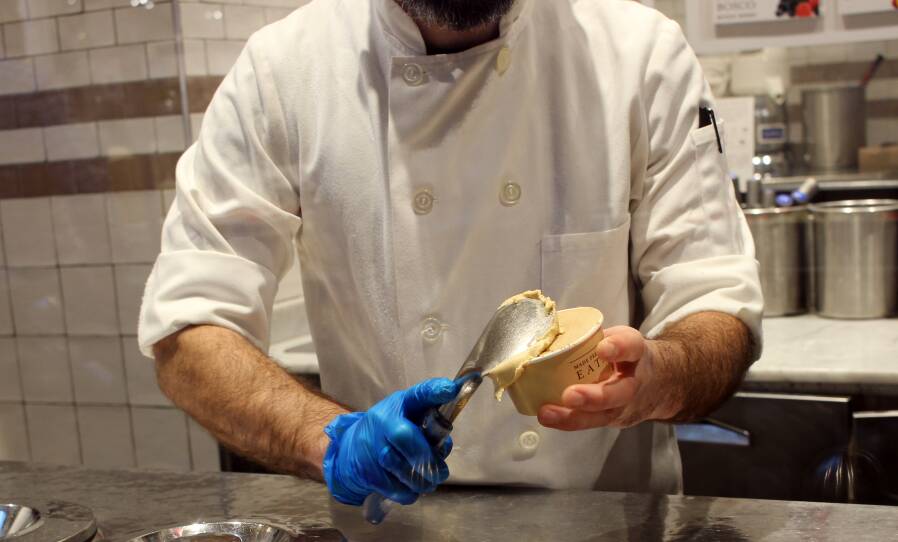
Gelato is served at a warmer temperature.
Gelato is served 10-15 degrees warmer than ice cream to preserve its smooth texture. Il Gelato uses a traditional spade—a flat spatula—to aid the warming process.
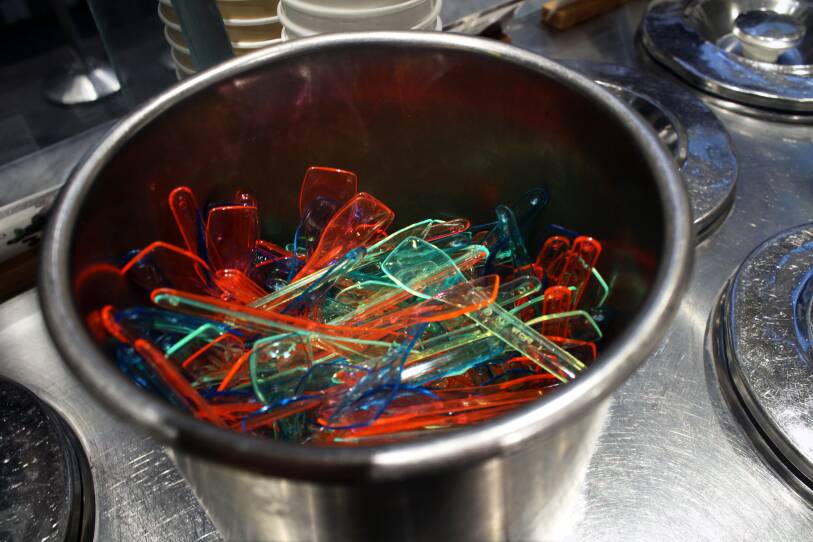
And those small serving spoons?
They do serve a purpose. Eating gelato with a tiny spoon helps you experience and enjoy its full taste. “You get to savor every single little bite,” Catalina adds. Beyond serving techniques, there is no right or wrong way to eat it. Catalina likes to mix two flavors, like their caramel and coffee. “That way, I get a little bit of one flavor, a little bit of the other, and then I can mix them.”
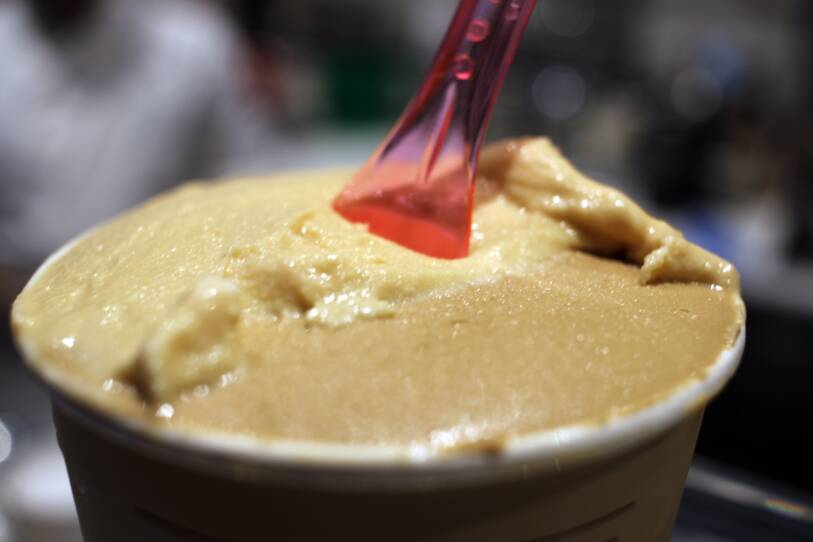
Catalina says that Bostonians come out year-round for the classics: chocolate, hazelnut, and pistachio. In the summertime, when Il Gelato rolls out the gelato cart, it's the lemon sorbet that everyone craves.
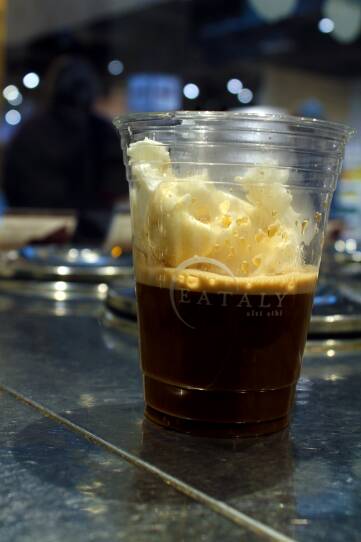
And who doesn't love a good Affogato? Il Gelato uses a mix of espresso (Lavazza and Caffè Vergnano) and gelato make the perfect morning and afternoon treat. But Catalina adds that Il Gelato doesn't open until 11am, so you'll at least have to wait until then to get your hands on the frozen treat.
Prudential Center, 800 Boylston St., Boston, eataly.com/boston-gelato
